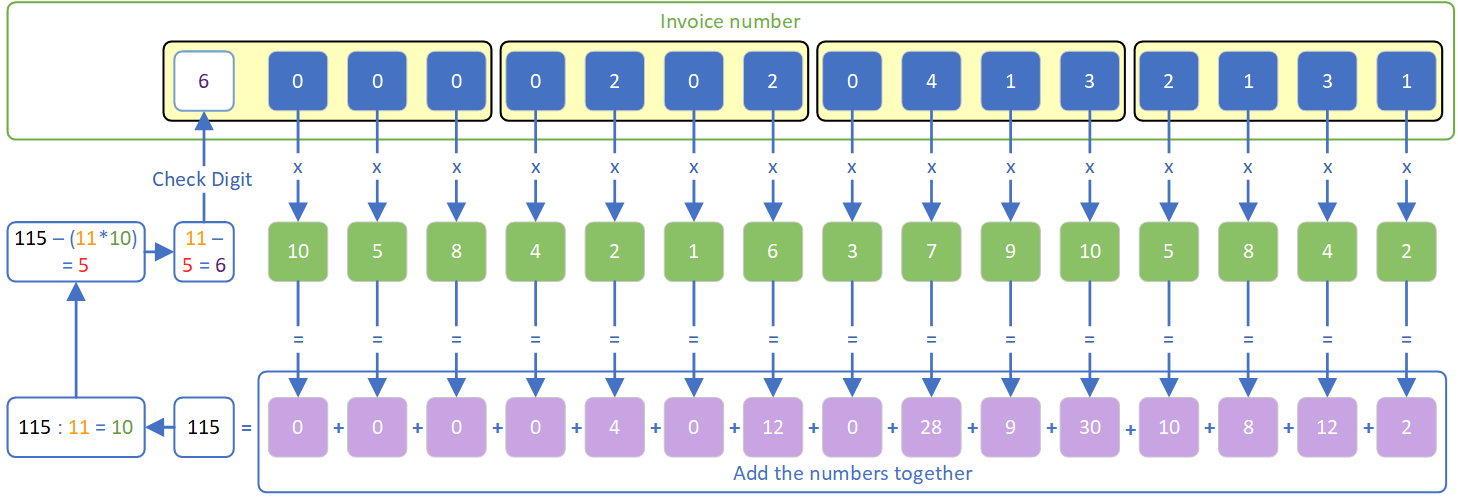SEPA CT - MOD11
Paying with a bank transfer (SEPA CT) carries the risk of incorrect submission of transaction data. Proper data provision is necessary to report the transaction as paid. The reconciliation of SEPA CT can be supported using the Payment Reference mechanism, verified within the Dutch banking environment by the MOD11 test.
The MOD11 calculation ensures that invoice numbers are correctly entered by validating them within the banking environment. Incorrectly entered invoice numbers are rejected, prompting the debtor to correct them before the transfer can be completed.
Steps to Build an Invoice Number Using MOD11
- Compose Invoice Number: Create a unique 15-digit invoice number. If necessary, complete the sequence with leading zeros.
- Apply Weighting Numbers: Multiply each digit by a predefined weighting number series.
- Sum the Results: Add the results of all multiplications.
- Divide by 11: Divide the total by 11, keeping only the whole number.
- Calculate Remainder: Determine the remainder of the total divided by 11.
- Determine Check Digit: Subtract the remainder from 11 to get the check digit.
- Add Check Digit: Place the check digit in front of the 15-digit invoice number sequence.
Example MOD11 Calculation

NoteThe MOD11 format has been used for years on bank giro credit slips, ensuring correct payment info before submission to the bank.
Updated 10 months ago